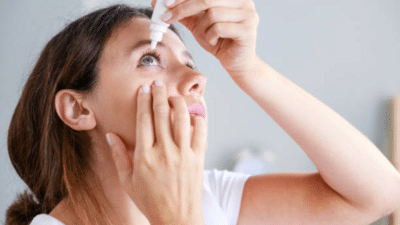Short answer: Yes. And it’s more common than you’d think.
When we hear the word cataract, we usually picture someone over 60, maybe with salt-and-pepper hair and reading glasses, squinting at the world through a cloudy fog. But here’s the thing—cataracts aren’t just an “old people problem” anymore. More and more young adults (yes, even folks in their 20s and 30s) are being diagnosed with this eye condition that blurs vision, dulls colors, and makes driving at night feel like navigating through a steamy bathroom mirror.
So what exactly is a cataract? In simple terms, it’s when the lens of your eye—the clear part that helps you focus—starts to get cloudy. For older adults, this is usually due to natural aging. But for younger people? The reasons range from genetics and trauma to lifestyle issues like smoking, overexposure to UV light, or even diabetes. And in today’s screen-happy, stress-packed world, our eyes are doing overtime—so it’s not all that shocking anymore.
The tricky part is that most young people don’t see it coming (literally)
Blurry vision? We blame it on too much screen time. Sensitivity to light? Maybe it’s just the new ring light. But if you’re constantly squinting, noticing halos around lights, or feeling like your glasses aren’t doing their job anymore—it might be time to look beyond the basics.
Dr. Pawan Gupta, Senior Cataract & Retina Surgeon, Eye 7 Hospitals, Lajpat Nagar & Vision Eye Clinic, New Delhi says, “cataract is usually an aging sign — a natural process by which the eye lens slowly gets cloudy and hard, leading to blurred vision. Cataracts, however, are not exclusive to older people, as in popular portrayal. Young adults and children can develop cataracts in certain circumstances.”
“One of the most frequent causes of early-onset cataract is trauma to the eye. Any type of eye injury — blunt, penetrating, or foreign body — will damage the lens and lead to cataract formation. The second leading causative factor is steroid use. The prolonged use of steroids in the form of eye drops, oral tablets, or even inhalation for asthma increases the risk factor for cataracts in youth. Diabetes is a firmly established risk factor. Uncontrolled blood glucose subjects the diabetic to the development of cataract at a younger age than the non-diabetic. Smoking is another lifestyle aspect that is well known to speed up ageing in the eye, making cataract development more likely even for people under the age of 40. Another less frequent but significant etiology is uveitis, or inflammation of the eye. Chronic or recurrent uveitis can lead to secondary cataracts, especially with steroid therapy as well,” he explains.
Can it be treated?
Dr. Sonika Gupta, Associate Director – Senior Eye Surgeon (Cataract, LASIK & Cornea), Max Multi Speciality Centre, Panchsheel Park says, “treatment in early stages is change in prescription glasses, eventually will require surgery – cataract surgery with intraocular lenses. Important consideration is early detection especially where there is family history and other risk factors, regular eye check-ups particularly for people with diabetes, adopting healthy habits like wearing sunglasses with UV protection and antioxidants rich diet.”
